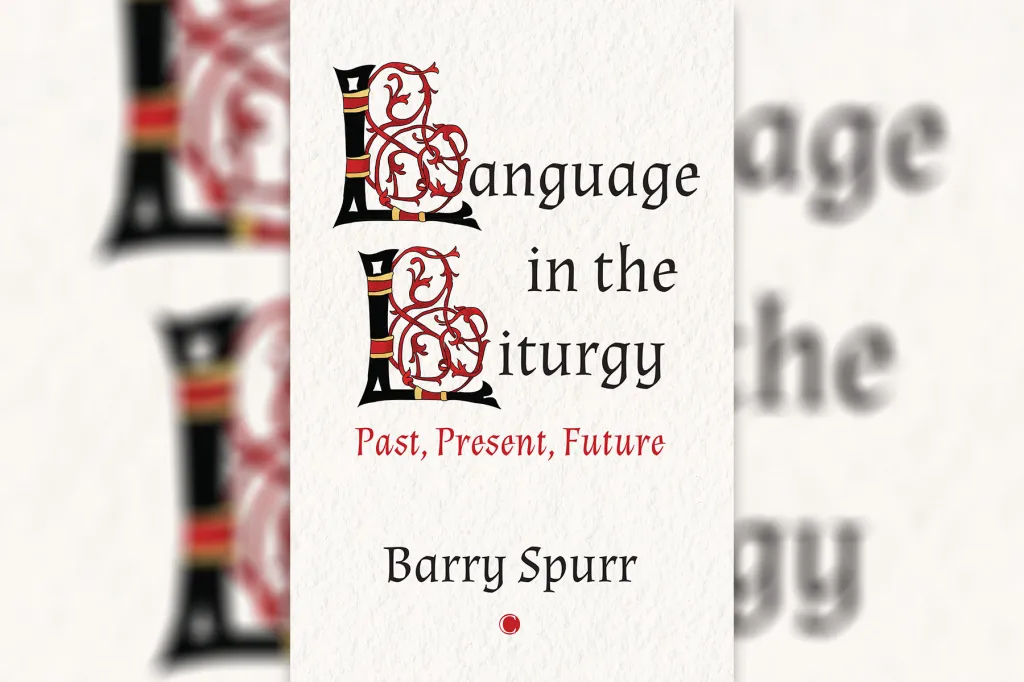The devil’s in the detail with these sacred words
Professor Barry Spurr’s new book is an historically based, linguistically focused account of the development of liturgical language in English in the Anglican and Roman Catholic churches over the past 60 years.

As February gave way to March, the ailing Pope Francis issued a message from his hospital bed in Rome urging Catholic dioceses worldwide to “foster a liturgical style that expresses the following of Jesus, avoiding unnecessary pageantry or prominence”.
Readers of the latest offering from Professor Barry Spurr, an authority on liturgies – the forms that public worship takes – and a staunch defender of traditional observance, will be left in no doubt that when it comes to near-death experiences, he sees the Church as being in at least as much mortal danger as St Peter’s 265th successor.
The core thesis of Language in the Liturgy is that over the past 60 years both the Anglican and Catholic communions have exchanged the “narrow way” that, according to Matthew’s Gospel (7: 13-14), leads to eternal life for the “broad … way that leadeth to destruction”.
The author – a widely respected poet – is an unabashed admirer of the Anglican Book of Common Prayer (1549), the work of Thomas Cranmer, that truly historic figure who not only acted as “midwife” at the birth of the Church of England but is comparable to Shakespeare himself as one of the most influential practitioners of English-language composition there ever has been.
“Only once in the history of liturgy in English,” writes Spurr, “has a language of liturgy that time has proved to be of timeless quality been composed: in the Book of Common Prayer, from the golden age of English prose and poetry in the Renaissance, which inspired the worship of generations of Anglicans for four hundred years and, for a minority of congregants in that Communion, continues to do so today.”
If you are a lover of the English language and prize excellence in its usage, study it for the displays of fine writing
You might like
As this book contains many warnings, yet another – from this reviewer – may not go amiss. If you tune out opinions that challenge your own views, this provocative volume is not for you.
It most decidedly is, however, for many of the secular and spiritually minded alike. If you are a lover of the English language and prize excellence in its usage, study it for the displays of fine writing it contains. A second audience will exist among those who see value in a strong community of faith and agree that, more than ever, people whose lives are roiled by social and political disruption are in need of one immutable thing – a conviction that will hold fast.
Both sets of reader are bound to find this work educative: before picking up this title I’d presumed that the different formats which supplanted time-honoured rituals all sprang from the Second Vatican Council of the early to mid-’60s. Not so: the church underwent a century of reform, beginning in 1903 and culminating in 2001 with publication of the final revised liturgical book, Martyrologium Romanum.
Another revelation is that abolition of Latin from the Mass was not authorised by Vatican II but instituted some years after the council in defiance of its prescriptions.

Author Prof Barry Spurr.
In Spurr’s opinion, “elevated discourse” in the script and speech of the liturgy is a key desideratum. This is certainly laudable in a society that privileges informality in so many other spheres of its non-serious pursuits.
Subscribe for updates
Few books could have a more serious intent but, over 350 pages, this rara avis (an academic who can write grammatically and with verve) deftly threads the stylistic needle between solemn and sombre. Without elaborate contrivance, Spurr’s text is sprinkled with samples of his wry, dry humour throughout. One instance appears during his deprecation of clerics who talk down to adult parishioners in what the author christens “baby-talk mode”.
One archbishop, we learn (he comes perilously close to naming who he means, as Sydney has only two – although of course this might be in another city) reverts to a sing-song voice while reading the liturgy at the altar, in a “tone that would be startling from a gormless adolescent. Scripture exhorts us to become like little children, but we hardly expect to be so addressed by senior prelates in the context of the sacred liturgy”.
The tradition of processional music accompanying the entrance of a coffin into the church at a funeral, Spurr says later, strikes a “sorry contrast with such as the beginning of the most recent Anglican funeral service I experienced, which had the coffin at the front of the nave and the priest opening the proceedings with ‘Good morning, everyone’, which seemed even to include the deceased (for whom it was probably not his best morning, in earthly terms) …”
The centuries-old custom of maintaining silence in church before a service begins has given way to the habit of conversational chit-chat in the pews
Even as he enumerates the targets of his disapproval, Spurr keeps an eye peeled for the absurdity in all these attempts to make the churches popular that, as he rightly points out, have done nothing to arrest the plunge in church attendances across the West while alienating many former congregants.
The centuries-old custom of maintaining silence in church before a service begins has given way to the habit of conversational chit-chat in the pews, which understandably comes in for severe deprecation. Prof Spurr makes an eloquent call for a revived recognition that wherever people gather to contemplate their God is hallowed ground.
Returning to this theme at full-chapter length, he translates a poster seen in a French house of worship: “When you enter this church, it may be possible that you hear ‘the call of God’. However, it is unlikely that He will call you on your mobile. Thank you for turning off your phones. If you want to talk to God, enter, choose a quiet place and talk to Him. If you want to see Him, send Him a text while driving’.”
Students of architectural history, along with many of the faithful, will know that the early Christians inherited the pagan preference for their temples to face east. Originally in recognition of the rising sun as a source of power, energy and hope, the practice accrued fresh significance from the fact that the city of Christ’s death and resurrection, Jerusalem, lay in the direction of dawn from the perspective of Rome.
A favourite phrase of Spurr’s is “reform of the reform”, as in: “No reform of the reform will occur without a return to the eastward-facing position in both of the liturgical Churches of the West.”
This may appear unduly doctrinaire but it does have a perfectly sensible rationale, expressed here in the words of a Guinea’s Catholic cardinal Robert Sarah: “Celebrating Mass facing east, by breaking up the face-to-face, private get-together, helps to prevent turning the liturgy into the community’s celebration of itself.”
Language in the Liturgy: Past Present, Future by Barry Spurr, James Clarke & Co, $55 (available through Quadrant)
quadrant.org.au/product/language-in-the-liturgy-past-present-future

